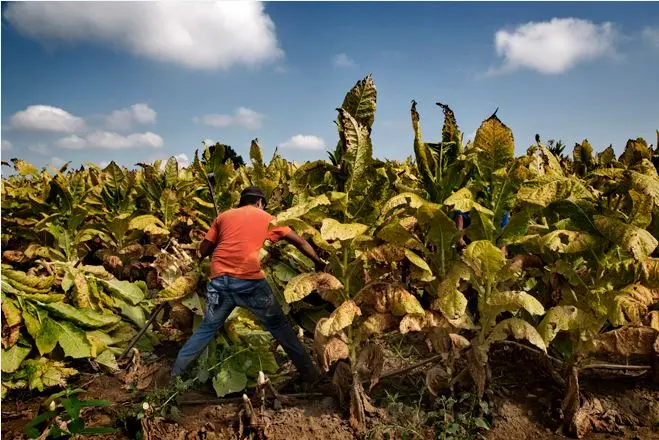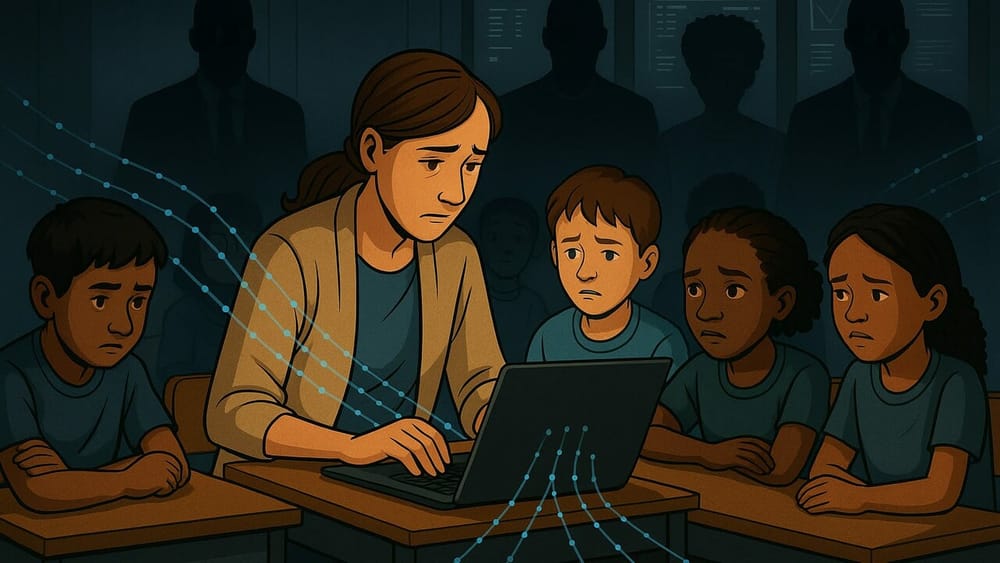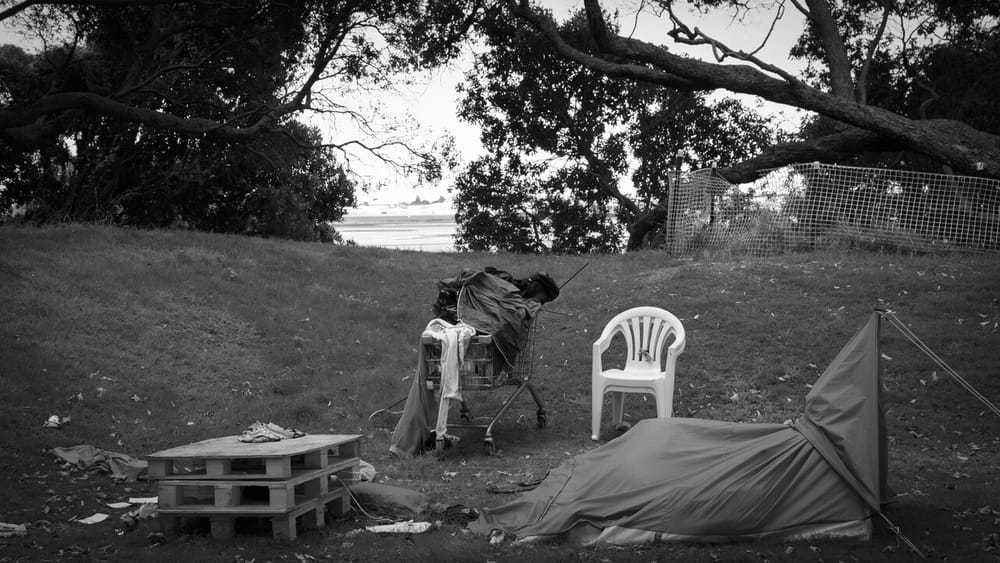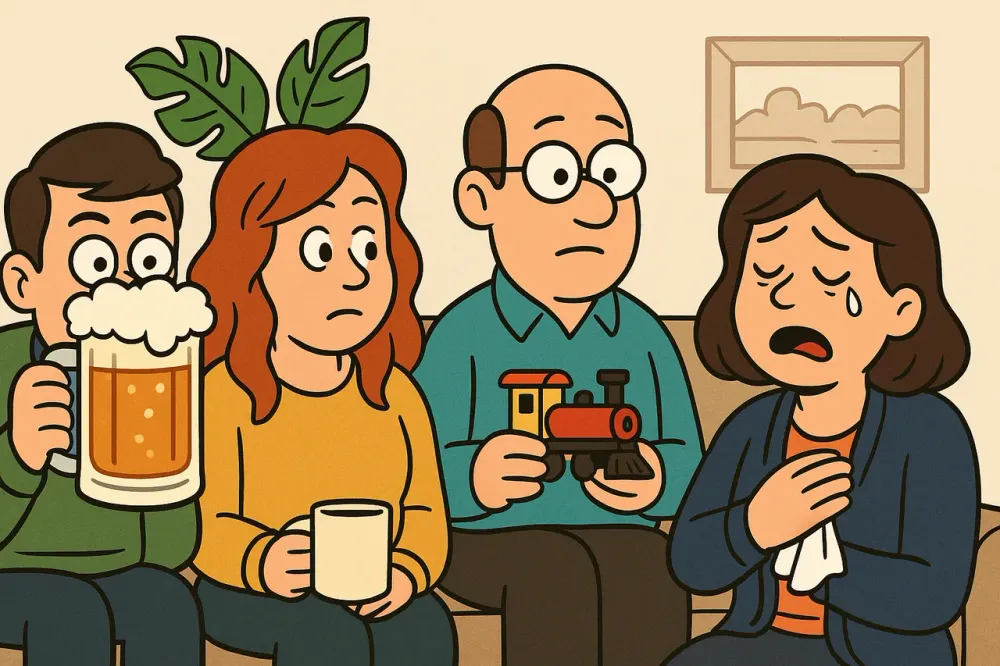Child labour continues to be an enduring challenge worldwide. The International Labour Organization (ILO) estimates that, as of the beginning of 2020, 160 million children were engaged in child labour globally, equating to nearly 1 in 10 children. Alarmingly, 79 million children, nearly half of those in child labour, were involved in hazardous work. The ILO defines child labour as “work that deprives children of their childhood, their potential and their dignity, and that is harmful to physical and mental development.” Hazardous child labour is one of the worst forms of child labour, and is defined as “work which, by its nature or the circumstances in which it is carried out, is likely to harm the health, safety or morals of children.” Features of hazardous work may include working underground, underwater, at dangerous heights or in confined spaces; working with dangerous machinery, equipment and tools, or hazardous substances; work which exposes children to physical, psychological or sexual abuse; or work that involves difficult conditions such as long hours or during the night.
In this two-part series, The Lovepost examines the countries facing the persistent legacy of child labour, and explore the nuanced factors underpinning this societal challenge. These pieces act as a call to action, beckoning readers to engage in meaningful initiatives—whether contributing to the eradication of child labour or advocating for improved conditions for the children, their families, and the communities entangled in this cycle of exploitation.
The well-known harms of child labour
The long-term damaging effects of child labour have been studied extensively, showing that children who have worked as labourers are more likely to become victims of slavery and economic and sexual exploitation. Adults who worked as child labourers earn, on average, 17 percent less than their peers who were not child labourers. In addition, if parents were once child labourers, there is a higher probability that their children will also become child labourers. This is due to the cycle of poverty and cultural beliefs that perpetuate the idea that it is acceptable for children to work.
For child labourers, physical health and safety become highly compromised for the rest of their lives. Some are affected by respiratory illness and lung damage, malnutrition and poor growth, while others suffer limb amputation or even death from workplace accidents. Furthermore, their social development is often stunted by a lack of contact with peers and nurturing familial connections, and by low performance in school due to exhaustion and working overtime. These issues lead to worse mental health outcomes and higher incidences of depression, substance abuse and social isolation later in adult life.
The unspoken reality of child labour within America's borders
In the late 19th and early 20th centuries, the rapid rise of industrialisation brought with it a dark underbelly—children labouring in factories, mines and fields. Their small hands operated machinery, their dreams eclipsed by the harsh realities of a flourishing industrial landscape.
As awareness of this exploitation grew, so did the call for change. In response, the Fair Labor Standards Act (FLSA) emerged in 1938, striving to curb oppressive child labour practices. The Department of Labor (DOL) states that this was “to ensure that when young people work, the work is safe and does not jeopardise their health, well-being or educational opportunities.” The FLSA was also introduced to ensure there were enough jobs for adults during the Great Depression. However, the path to progress was not without its twists and turns. The FLSA, while a monumental stride forward, carried exemptions, notably in agriculture, allowing the persistence of child labour in certain sectors.Fast forward to the 21st century, global discussions on child labour frequently centre around the challenges faced by developing nations. In the United States as well, there is a keen enthusiasm among Americans to address the struggles of children in distant corners of the world. However, there exists a pervasive irony, as the very issue they decry abroad persists within their own communities, often unnoticed.
The United States relies on child labour in many of its industries. Children and adolescents work in manufacturing, food production, hospitality, industrial laundries, logging, farming and construction. Unlike teenagers who choose to work a few hours a week to earn pocket money or gain work experience, the majority of child labourers are younger migrants from overseas who work long shifts, sometimes in dangerous conditions, as a matter of survival. This article focuses on these migrant workers; however, it is important to note that US children growing up in poverty are also likely to be exploited through child labour.
Child labour violations increased by an estimated 37 percent in the United States from 2015 to 2022, with the COVID-19 pandemic prompting a new surge and reversing positive trends. In an article for The New Yorker, writer and reporter William Finnegan described the factors contributing to the increase:
This surge is being propelled by an unhappy confluence of employers desperate to fill jobs, including dangerous jobs, at the lowest possible cost; a vast wave of “unaccompanied minors” entering the country; more than a little human trafficking; and a growing number of state legislatures that are weakening child-labor laws in deference to industry groups and, sometimes, in defiance of federal authority.
Why are employers desperate for workers? Who are these unaccompanied minors and why are they coming to the United States? Which states are weakening their child labour laws, and why?
An ‘American’ mindset
There are several reasons behind the current rollback of child labour laws and protections in some US states. Firstly, businesses are struggling to fill jobs, and wish to keep their costs down. The development of complex supply chains means consumers and business operators are several steps removed from the harm that child labour causes. Finally, a historical mindset that working benefits children persists, despite the 1938 legislation that was introduced to improve children’s working conditions. This cultural attitude suggests that hard work builds character in children, and therefore prevents poor children from becoming directionless and a burden on society. Writer and historian Steve Fraser notes how the wealthy elite, including politician Alexander Hamilton, supported this idea:
American “founding father” Alexander Hamilton’s 1791 Report on Manufacturing noted that children “who would otherwise be idle” could instead become a source of cheap labor. And such claims that working at an early age warded off the social dangers of “idleness and degeneracy” remained a fixture of elite ideology well into the modern era. Indeed, it evidently remains so today.
Fraser also notes that in the early twentieth century, many working-class families in America needed their children to work because they could not earn enough themselves. These children contributed anywhere between 28 to 46 percent of their families’ income, especially if they were from German or Irish migrant families. As this was a necessity for survival, many parents in these working-class families opposed new child labour laws.
Presenter and commentator Dr Keith Suter further explains this mentality towards child labour on the Global Truths podcast. He attributes the indifference of the US public to child labour to the dependence of their economy on consumerism. In many countries around the world, governments provide funding to industry sectors to help with economic growth. The US economy, in contrast, relies solely on consumer spending.
Such reliance on consumer spending encourages a mentality that learning to work hard is valuable for young people, as well as being good for business. This thinking led to the pervading belief that the United States is a place of opportunity and freedom and that everyone can be successful if only they work hard enough. The adage that America is the “greatest country in the world” became ingrained in the culture, and it is seen as unpatriotic to examine the country’s inadequacies or social inequality closely.
In effect, it is advantageous to industry and consumerist culture for the US public to stay unaware or unaffected by child labour, and continue to buy from their favourite brands. Bread rolls from Walmart, socks from Fruit of the Loom, and T-shirts from JCrew: all of which are produced by underage workers. It is also seen as the only solution for families who rely on child labour for income. Thus, rather than trying to increase labour protections, the situation continues to be enabled. Finnegan describes this multi-faceted dilemma of stopping child labour in America:
Certainly, crumbling economies in Central America intensify this crisis. But the immediate problem is a broad indifference to the wellbeing of children when profits are at stake.
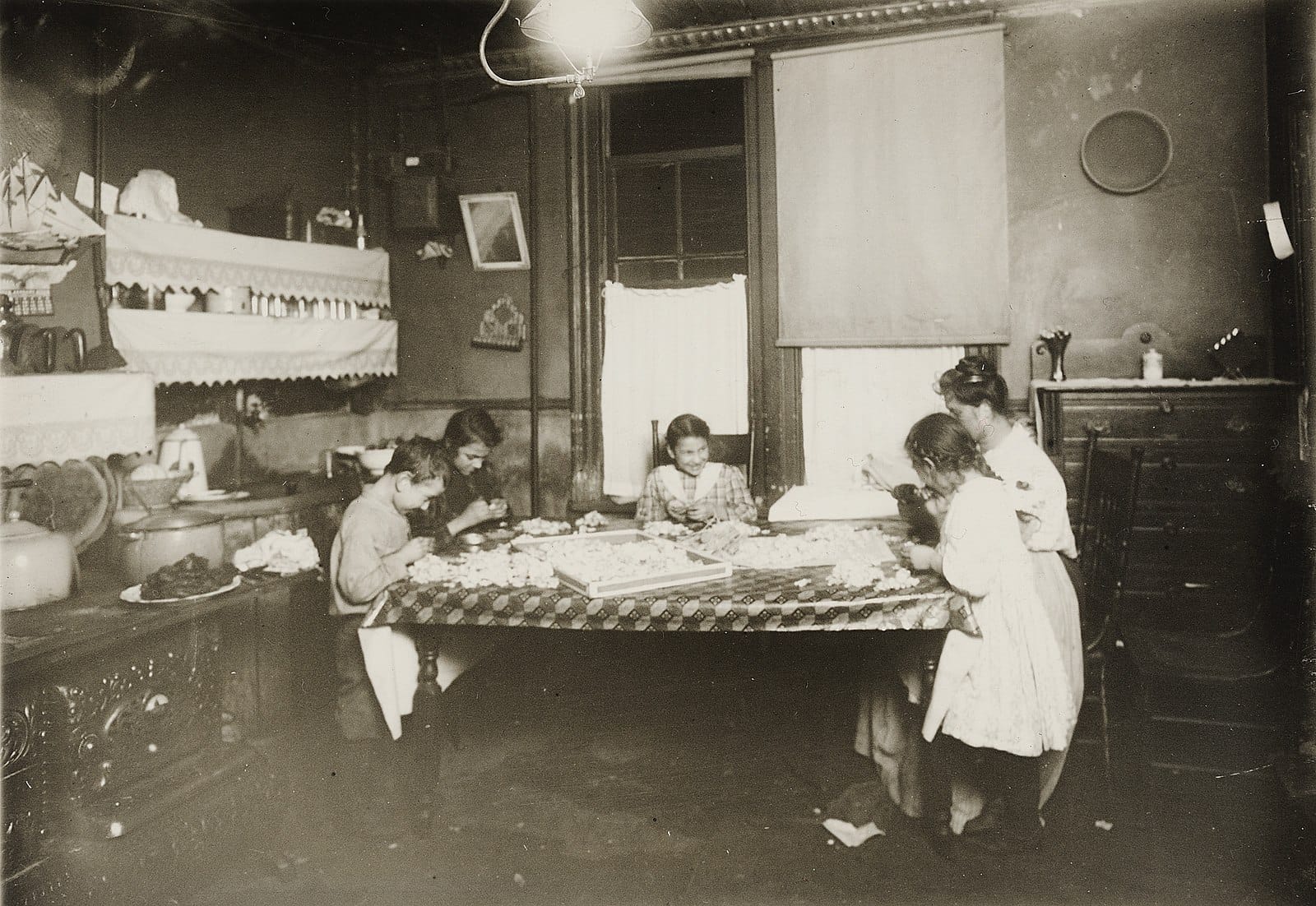
Loopholes through outsourcing
While the United States is considered a developed country, living conditions and working conditions have become increasingly worse for middle and low-income people since the 2008 financial crisis. Employers are unable to improve working conditions or offer benefits, and on top of this, seek to cut costs. Fraser explains how these conditions have led to more child labour in an article for The Nation.
Think of the United States, then, as a “developed” country now in the throes of underdevelopment and, in that context, the return of child labor is deeply symptomatic. Even before the Great Recession that followed the financial implosion of 2008, standards of living had been falling, especially for millions of working people laid low by a decades-long tsunami of deindustrialization. That recession, which officially lasted until 2011, only further exacerbated the situation. It put added pressure on labor costs, while work became increasingly precarious, ever more stripped of benefits and nonunionized. Given the circumstances, why not turn to yet another source of cheap labor—children?
It cannot be good for a company to be seen employing children for arduous or dangerous shifts. So, how do employers avoid risking their reputation?
Today, it is common practice to outsource the employment of workers. Instead of paying to have a human resources department, many companies outsource hiring to contractor companies. David Weil, former dean of Heller School for Social Policy and Management at Brandeis University, and former administrator of the Wage and Hour Division of the DOL, explains how since the 1970s companies have hired youth workers through secondary contractor companies. Weil points out in his interview with CNN what this means now:
[S]ome well-known brands are not in direct control of many of the people who work for them. In the cases of child labor at the meatpacking plant and at Hyundai-Kia, the companies used third-party labor suppliers and said they weren’t aware of children working illegally.
The consequences of child labour violations do not fall on the original company sourcing these workers. Contractor companies are smaller and less well-known, meaning when they get fined, they (and by extension the original company that hired them to employ youth workers) do not suffer the long-term consequences of losing face with the public. Writer Timothy Noah explains this issue in an article for the New Republic:
The more common, and more invisible, problem is that through subcontracting and franchising, large corporations have made the enforcement of labor protections for frontline, low-wage workers other people’s problem . . . The penalties for violating these laws are small—for employing child labor, you pay all of $15,138 per child—and the reputational damage is minimal for a subcontractor or franchisee of whom nobody’s ever heard [of].
This explains why more and more illegal employment of children is happening in the United States. However, there is one sector that can legally hire young workers.
Exemptions in agriculture
Different industries are governed by varying laws and regulations on child workers. This is most apparent in agriculture and farming, which allows children as young as 12 to work 12-hour shifts if they don’t miss school and have permission from a parent or guardian. Furthermore, 16-year-olds are permitted to do hazardous work on farms, whereas the age limit is 18 in other sectors.
Farms and agricultural work were exempt from the 1938 Fair Labor Standards Act, largely because at the time, farms kept enslaved Africans who were excluded from the rights given to other workers. Another reason the industry was exempt was so that farming families could have their children work on their own farms. Today, these outdated laws mean that migrant children from Central America are doing this work. These young people lack the basic protections workers in other industries have a right to, and as a result their physical health, safety and education suffer.
Furthermore, due to a lack of oversight on agricultural workplaces, it is difficult to get an exact estimate of how many young farm workers are US citizens and how many are migrants. However, with data collected in 2021, researchers found that:
[O]ver 90 percent of young hired workers in agriculture are persons of colour, typically seasonal migrant Latinx. These youth often work in agricultural settings that either elude or are not subject to the surveillance and data collection procedures of the federal Bureau of Labor Statistics and the National Institute for Occupational Safety and Health; substantial numbers of young, hired workers in agriculture will therefore not be included in the best-available federally supplied data.
The American Federation of Teachers (AFT), a union of education and health professionals working towards improving education, health care and public services for their students, families and communities, explains the dangers to children (especially migrants) under these more liberal frameworks in agriculture work on their website:
Agricultural workers are exempt from the Fair Labor Standards Act of 1938. Consequently, migrant farmworkers are largely unprotected by the U.S. legal system today, and 500,000 of these workers are under the age of 18 . . . it prevents the majority of children from migrant families from completing even a high school education.
The AFT goes on to explain the conditions these migrant child workers experience, and how these impact their health and life expectancy.
Many of these children start working as young as age 8, and 72-hour work weeks (more than 10 hours per day) are not uncommon . . . Children are regularly exposed to pesticides, greatly increasing their risk for cancer . . . 100,000 child farmworkers are injured on the job every year and that children account for 20 percent of farming fatalities.
Why, then, are so many migrant children coming to the United States and looking for work?
A vacuum effect
There are many reasons why unaccompanied minors cross the US border. The COVID-19 pandemic intensified the existing poverty and violence in Central American countries like Guatemala and Honduras, putting financial strain on families, and increasing concern for their children’s safety. Hannah Dreier is an investigative reporter for the New York Times and a whistleblower on companies employing child labourers (mainly unaccompanied migrants). She tells the stories of individual child migrants here.
In recent years, poverty worsened in Central America . . . More than 300,000 migrant children have entered the United States on their own since 2021, by far the largest such influx in memory. Most have ended up working full time, fueling a resurgence in child labor not seen in a century.
In 2008, a law was introduced in the United States allowing unaccompanied children who attempt to cross the border from Mexico to the United States to seek asylum. They are taken into the custody of the Department of Health and Human Services (HHS) to find a suitable ‘sponsor’ (a family member or caregiver) the child can live with in the United States.
In an article about a teenager called Marcos, Dreier explains the common dilemma families from Guatemala and Honduras face, when choosing to send their child away:
He came from a village in Guatemala to this small town on the Eastern Shore of Virginia several months earlier. Before he left, his family was struggling to pay for electricity and skipping meals in the aftermath of the pandemic. They couldn’t afford formula for his infant sister. His parents were growing desperate and knew that while adults who arrive at the U.S. border are generally turned back, minors travelling by themselves are allowed in. The policy dates back to a 2008 law intended to protect children who might otherwise come to harm on their own in Mexican border towns. In the 15 years since, the carveout has become widely known in Central America, where it shapes the calculations of destitute families. Marcos’s parents decided he would go north and find a way to earn money.
However, as more and more children cross the border, the HSS became overwhelmed by the demand. With pressure to find sponsors for more children, many sponsors are not thoroughly checked. This resulted in many children working to support themselves, pay off debts and send remittances back home. Finnegan explains the situation in an article for the New Yorker.
In 2022, a hundred and thirty thousand unaccompanied minors entered the H.H.S. system, nearly half of them from Guatemala. In the rush to house such numbers, sponsors are barely vetted. Some are relatives, some are traffickers, some are a combination. Follow-up by H.H.S. has been tenuous—the agency loses track of a huge number of children within a month of their placement. But one thing is certain: although these kids, like all children, are required to go to school . . . they also need to work. There are debts to be repaid, living expenses, and remittances to be sent home. If employers ask for an I.D. or a Social Security number, faked documents can be easily bought; many employers do not ask.
Migrant children like Marcos find themselves working long hours in dangerous working conditions. Marcos worked the night shift on a chicken farm production line so he could attend school during the day. The community he worked in knows migrant children need to work to support themselves and their families back home, so they turn a blind eye. But one night, while working at the plant, Marcos’ right arm got caught in the production line machinery. He was airlifted to the hospital for emergency surgery. His right arm was permanently maimed from the accident, and he is no longer able to work.
Dire working conditions, injuries, and even death are common among child labourers, both for migrants and birthright citizens. In 2022, 3,786 children were found working illegally. In 2021, 24 workers under the age of 18 died in workplace accidents. But instead of strengthening the current laws, more and more US states are choosing to relax their child labour policies.
Support for child labour
Numerous states across the United States are working towards repealing their child labour laws and protections. Jobs need to be filled, and some of the previous protections on child labour are making filling these jobs “too cumbersome” for companies. Michael Sainato, a labour reporter for The Guardian, examined two states in particular:
Backed by big business and lobby groups, politicians nationwide are pushing attempts to expand work hours for minors, expand the industries minors are permitted to work in, reduce enforcement and legislate sub-minimum wages for minors . . . Arkansas passed legislation in 2023 to eliminate age verification and parental or guardian permission requirements . . . In Iowa, a bill was passed in 2022 to lower the minimum age of childcare staff and reduce staff-to-child ratios.
New policies proposing increased hours, an increase in responsibilities and less red tape for employing young workers are just the tip of the iceberg. Companies have already been caught and fined for using underage workers; these rollbacks will mean such companies will not be held accountable.
How old does a child have to be to be responsible for their own safety? Timothy Noah asks this question in an article for The New Republic:
A bill introduced in Iowa last month would allow 14-year-olds to work in meatpacking plants. If the youngster gets hurt due to his own negligence (whatever that means at 14), the meatpacker will be indemnified against civil liability.
Jennifer Sherer, director of the Economic Analysis and Research Network (EARN) State Worker Power Initiative, agrees with this sentiment. In an interview with The Guardian, she says:
The most immediate problem and consequences, I think, created by the state rollbacks is the message that it’s sending, that on top of the already weak enforcement, it’s the state officials saying to the business community and to workers that they’re not going to be enforcing wage and hour or child labor laws.
What can be done about the child labour problem in the United States?
Raise your voice - report a child labour incident
If you have seen or are suspicious that a child or young person is working in terrible conditions, you can report it as a child labour violation. You can make a complaint to the United States Department of Labor (DOL). The process keeps you anonymous and the underage minors’ identity is kept confidential, so the company cannot retaliate or punish the young person in question.
Build awareness, demand change
One solution to tackle child labour in America is to grow awareness of the issue within the US public and around the world. Journalists like the ones mentioned in this article are playing a key role in making the public aware that they can demand change through their spending and their votes. There are other groups taking a stand too.
Advocacy groups like the Child Labor Coalition (CLC) play an important role in building public awareness of child labour problems and challenging the institutions that continue to permit it. The CLC works to build awareness of child labour issues through public media campaigns, education, and testifying to the federal government.
Their website has a plethora of information of the different products produced by US child labour, explanations on work policy, types of child labour in the United States and how to support individual campaigns. You can support the Child Labor Coalition by reading their news and attending one of their events or by donating money to fund their efforts here.
Among their efforts, the CLC joined the Association of Farmworker Opportunity Programs in 1999, to launch the ‘Children in the Fields’ Campaign. This campaign specifically focuses on reducing the number of underage migrant and seasonal workers who work legally in agriculture under harsh conditions.
A grassroots movement confronting big business
While the CLC broadly tackles multiple child labour issues in the United States, smaller industry specific groups are taking a stand against local companies known for their child labour violations. One group is Venceremos.
Venceremos is a not-for-profit organisation, advocating for the protection of workers in the poultry farming industry. In October 2023, their executive director, Magaly Licolli, organised a worker rally at Tyson Foods Headquarters in Springdale, Arkansas. This allowed workers in Tyson Foods plants to protest. They expressed their concerns after the company did not take action to improve working conditions after being penalised for hiring children to work in their slaughter houses.
Support Lawmakers taking action
Harm Venhuizen, is a State Government reporter. In his article for the Associated Press he emphasises the alternatives to hiring youth workers that Economists have tried to put forward to Senators;
The most obvious is encouraging immigration, which is politically divisive, but which has been a cornerstone of the country’s ability to grow for years in the face of an ageing population. Other strategies could include incentivizing older workers to delay retirement, expanding opportunities for formerly incarcerated people and making child-care more affordable, so that parents have greater flexibility to work.
Which senators are avoiding these alternatives?
Michael Sainato from the Guardian, identified the trend of Republican Senators and legislators wishing to relax Child Labour laws. They are less likely to support laws and policies that would demand companies to have better working conditions and greater transparency about who they are hiring. These senators have pushed for new laws and policies in 2023 to lower restrictions on workers aged 14 and 15 years old in Iowa, Minnesota, Missouri, Nebraska, Ohio, South Dakota and Arkansas.
However, there is something the public can do. If you live in these states, you can write to your local senator and state your disapproval of their actions and policies. Furthermore, you can demand the alternatives outlined by Venhuizen.
The majority of Democratic senators, legislators and policy makers are pushing for laws and policy that would enforce companies to have better work conditions and accountability. For example, Congresswoman Hilary Schloten introduced a bill to increase the civil penalties on businesses and people who employ children. Senators Peter Welsh and Cory Booker introduced the bicameral Child Labor Exploitation Accountability Act, which prohibits the Department of Agriculture (USDA) from working with companies with a history of violating child labour laws, or have employed contractors who employ child labourers.
Senators Alex Padilla, John Hickenlooper and Roger Marshall have also introduced Child Labour Accountability Act of 2023. This act holds the United States Department of Labor (DOL) accountable for thoroughly investigating child labour violations by demanding they give an annual report on their progress with cases to congress.
There are numerous efforts being made by senators to combat the loosening of child labour laws in the United States. You can write to your local senator and express your support or concern for their actions. You can detail the alternatives available and emphasise they can demand companies and the DOL to have greater transparency.
Vote for change with your dollar
Ultimately, consumers can give a strong message to companies that they do not support child labour by not buying their products. How realistic this is as an action will be different from person to person. Nearly 40 percent of American adults reported they are struggling to make ends meet each month in the 2023 Household Pulse Survey. However, some households would be able to take the time to find alternative products and companies.
Child Labour in the United States and around the world
The United States has a unique combination of factors which has driven its long history of employing under aged workers. Outdated labour laws, companies' desire to keep costs low by hiring through second parties, and the skewed immigration policies contribute to the increase in underage workers. There is the attitude that work is the best opportunity for these children and young people, and alternative solutions are not widely acknowledged.
However, the personal plights of young children in this system should not be ignored. Political structures and outdated laws allow companies to dodge liability for the safety of young people in their workplaces to keep their costs down. Lowering standards of work in the United States even further will only worsen the situation. But raising awareness, voting for senators and law makers against the loosening of child labour laws, and spending money ethically and consciously, can bring about change for children.
If you would like to find out more about which products are produced through child labour, refer to the detailed list of products and countries where child labour is utilised, compiled by the Bureau of International Labour Affairs.



